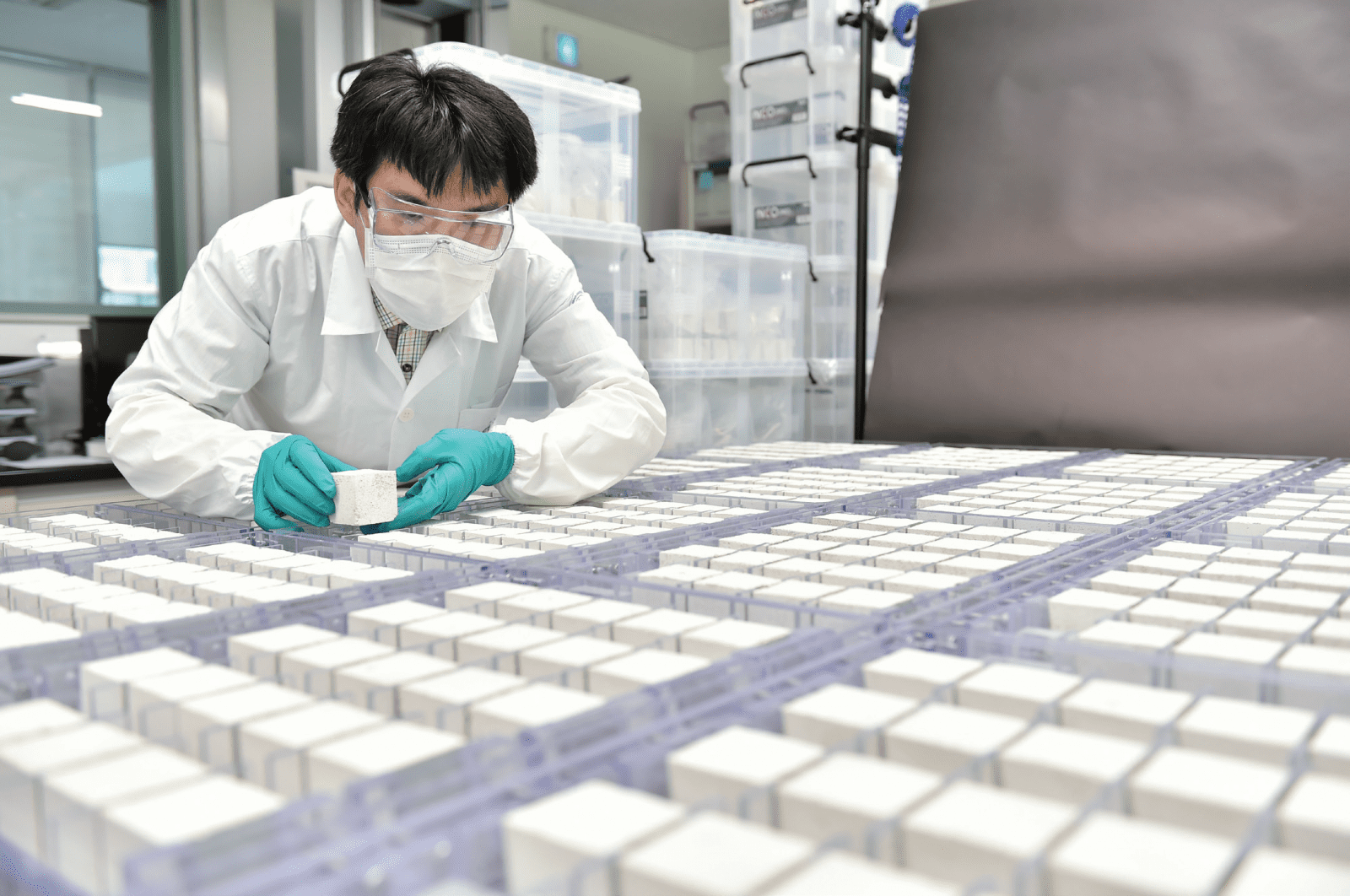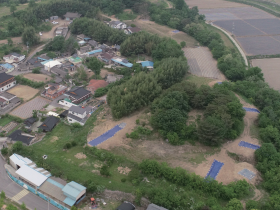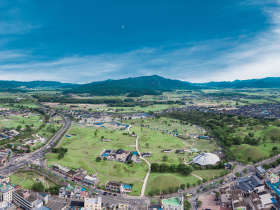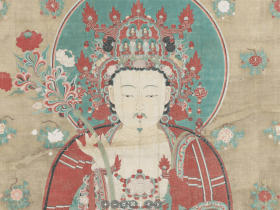Restoration Technology Division
Yun Eunyoung
The purpose of this research is to enhance the organized conservation and management of cultural heritage. Addressing the needs of cultural heritage field sites, our efforts encompass performance assessments and field application studies to elevate the quality of lime mortar1) for repair applications. Additionally, we are conducting personalized technology application research, including investigations into performance and stability, in order to establish evaluation standards for biological control agents.


1) Mortar: An equally proportioned mixture of lime and sand, blended with water






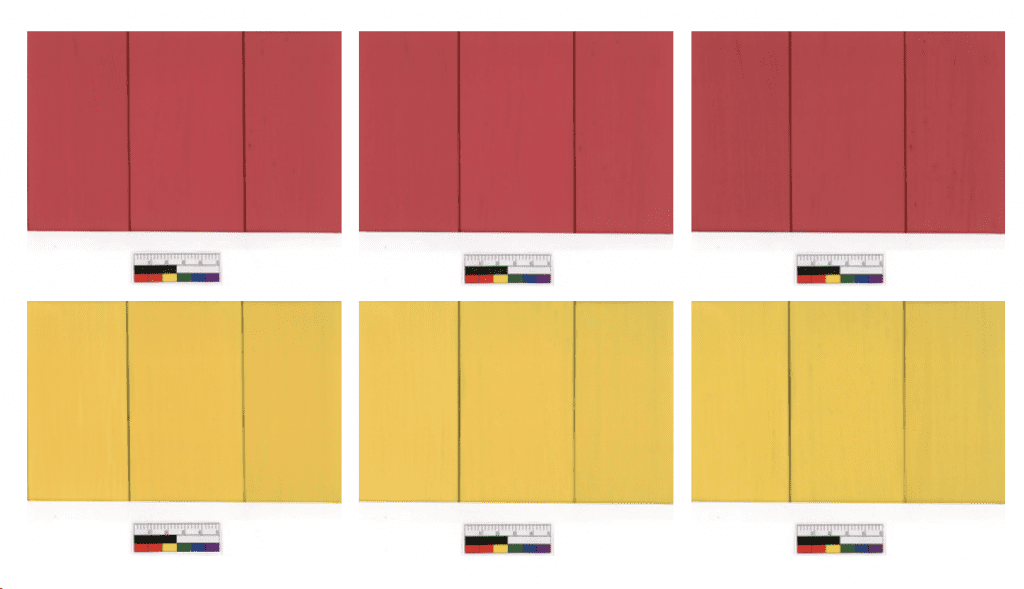

Research on Lime Mortar for Cultural Heritage Repair
Lime, historically used for architectural and cultural heritage, has seen limited modern research, resulting in its replacement by materials like white portland cement. Our study was geared towards uncovering the formulation and manufacturing methods of lime, while also improving its performance for the repair of cultural heritage. This research has led to pilot applications and weather resistance assessments at Namhansanseong Fortress and Changdeok-gung Palace, providing insights into their applicability to cultural heritage sites. In 2022, we formulated the “Performance Improvement Plan for Lime in Cultural Heritage Restoration” based on our findings and submitted it to the Preservation Technology Division of the Cultural Heritage Administration for adoption. Additionally, we are exploring the possibility of research into cement mortar for repairing registered cultural heritage to facilitate modern heritage repair efforts.
Research and Survey on Biological Control of Wooden Cultural Heritage
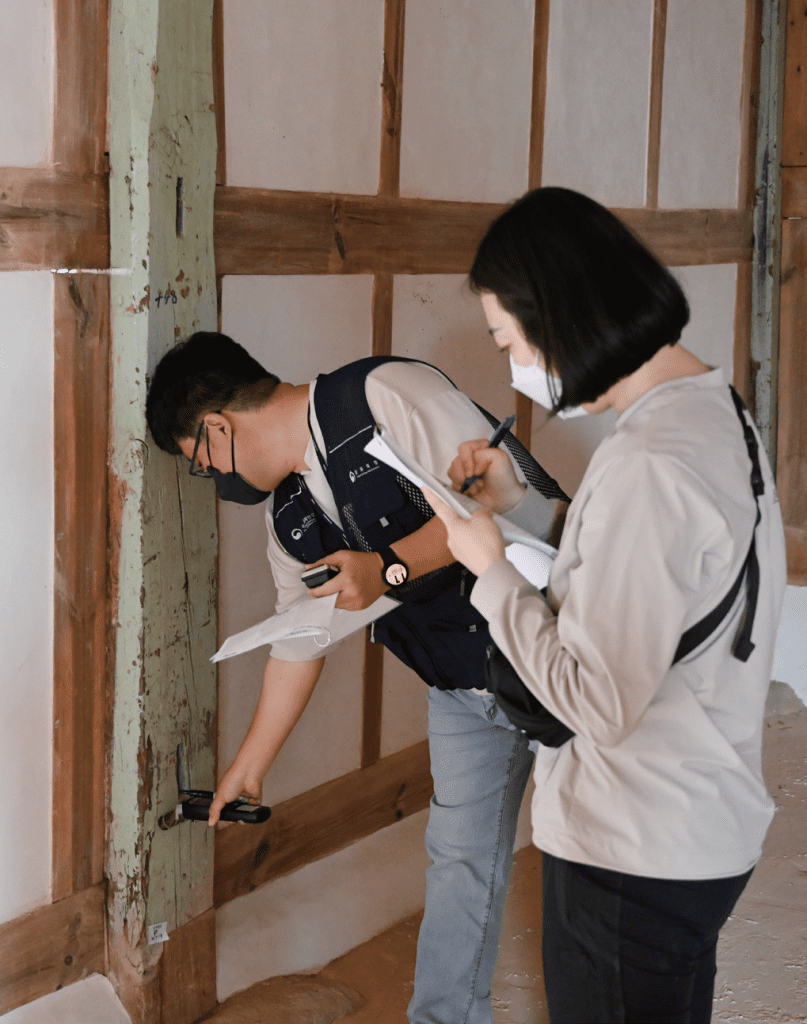

(Sangju Hyanggyo; Confucian temple and school)
Wooden structures are vulnerable to harm from insects including termites and beetles, as well as wood-rotting fungi2). To manage this, it is crucial to eliminate the source of biological damage and apply control agents. When dealing with cultural heritage, the chosen agent must possess excellent insecticidal and antiseptic properties while avoiding damage to the heritage itself. Due to the limited options, our research focuses on identifying and applying various suitable agents. Our work involves evaluating the effectiveness, persistence, and stability of these agents, including their impact on Dancheong, the decorative pigments on the heritage building surface. Furthermore, we conduct regular monitoring of wooden cultural heritage nationwide to assess the extent of existing biological damage. This proactive approach enables us to promptly initiate control projects when necessary. The data gathered from these monitoring activities is meticulously recorded and organized within a database. Eventually, an annual report detailing our findings is generated and distributed. We formulated the “Performance Improvement Plan for Lime in Cultural Heritage Restoration” based on our project’s findings for enhancing the performance of lime mortar in cultural heritage repair. Furthermore, we have leveraged our ongoing “Examination of Biological Deterioration on Wooden Cultural Heritage” initiative, which began in 2011, to establish a comprehensive risk assessment system for termite damage to cultural heritage. This system encompasses four key evaluation criteria: termite presence, damage rate, wood-rotting degree, and environmental factors. We aim to use this system to create an effective management framework by categorizing cultural heritage based on their respective risk ratings.
2) Wood-rotting fungi: A type of fungus that infiltrates living trees and infects their heartwood or sapwood, contributes to the deterioration of timber through wood rotting
Major accomplishments





